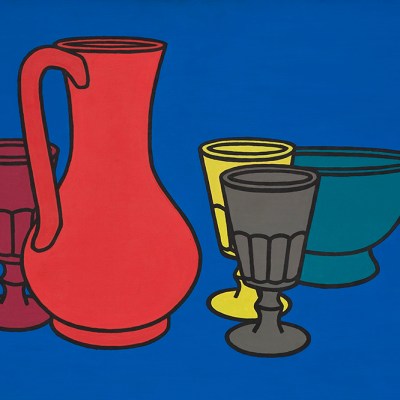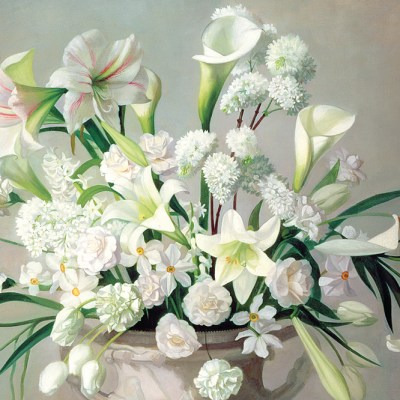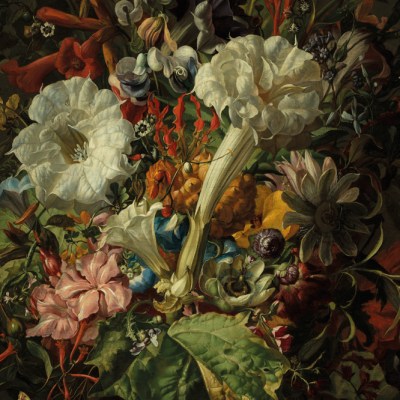

Still Life with Lemons, Oranges and Pomegranates. (c. 1660; detail), Jacob Fopsen van Es. Carnegie Museum of Art, Pittsburgh

‘Four things to see’ is sponsored by Bloomberg Connects, a free arts and culture platform that provides access to museums, galleries and cultural spaces around the world on demand. Explore now.
Each week we bring you four of the most interesting objects from the world’s museums, galleries and art institutions, hand-picked to mark significant moments in the calendar.
Born 135 years ago this week, Giorgio Morandi devoted his life to painting unusual still lifes – dusty bottles, weathered boxes and humble ceramic vessels arranged in thoughtful compositions of subdued colour. Working primarily in his small apartment in Bologna, Morandi depicted ordinary objects with extraordinary sensitivity and intimacy. His restrained palette of chalky whites, dusty pinks and muted ochres imbue his mundane subjects with quiet mystery. Though the range of vessels he painted was narrow, his repeated rearrangement of them is indicative of his persistent search for harmony.
Though the still-life genre has ancient roots, it flourished in 17th-century Dutch and Flemish painting in particular, where meticulously rendered fruits, flowers and luxury goods carried all kinds of symbolism as well as representing mercantile (and imperial) pride. Contemporary practitioners continue to reinvent the genre through photography, installation and digital media, finding endless metaphorical possibilities in the artful arrangement of objects. This week we explore four still lifes that span centuries and continents but are united in their thoughtful examination of the everyday.
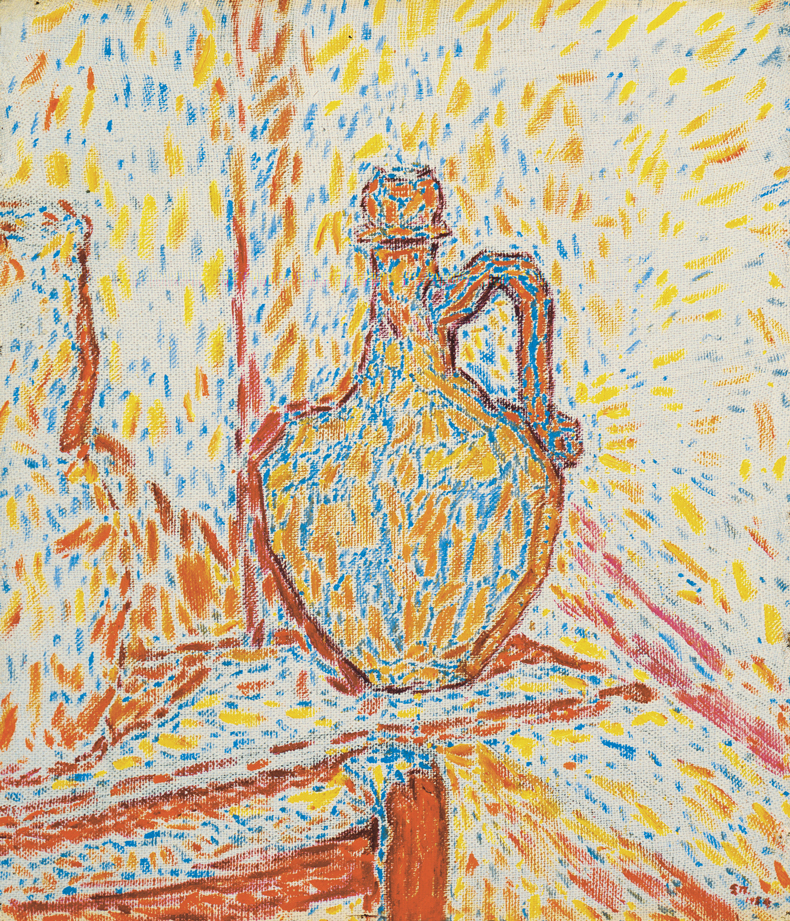
Jug (1956), Spyros Papaloukas
B&M Theocharakis Foundation, Athens
This vessel vibrates with energy, rendered through an array of dots and dashed brushstrokes that turn solid form into shimmering light. Though seemingly a simple domestic object, it has a monumental presence. Papaloukas’s experimental approach infuses the still-life genre with fresh life; his carefully composed works balance light and shadow, movement and depth. Click here to find out more on Bloomberg Connects.
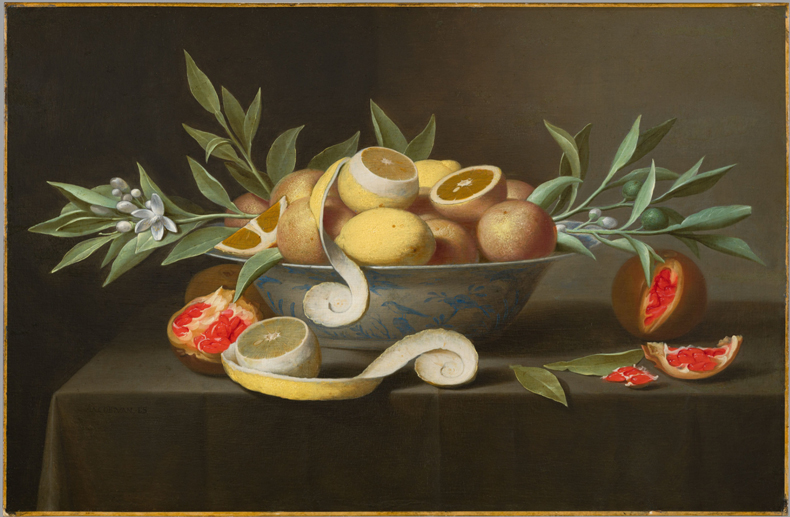
Still Life with Lemons, Oranges and Pomegranates (c. 1660), Jacob Fopsen van Es
Carnegie Museum of Art, Pittsburgh
Meticulously rendered citrus fruits emerge from a dark background, each dimpled rind, translucent membrane and glistening droplet capturing the available light. Van Es exemplifies the Flemish baroque tradition in which still lifes were displays of both artistic virtuosity and economic prosperity. These exotic fruits, expensive imports in 17th-century Europe, symbolise not only sensory pleasure but also global trade networks. Click here to learn more.
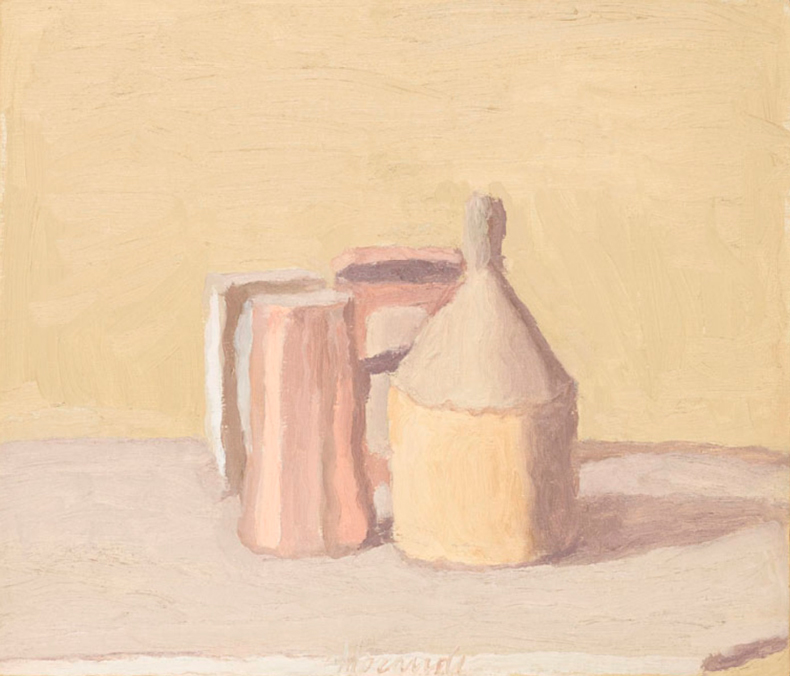
Natura Morta (1949), Giorgio Morandi
Museum of Modern and Contemporary Art of Trento and Rovereto (MART), Rovereto
Clustered vessels in muted tones occupy the centre of this canvas, their edges softly blurred as if dissolving into the atmosphere. Morandi’s characteristic restraint – limited palette, simplified forms, minimal background – gives the objects a hypnotic presence. These ordinary items, arranged and rearranged countless times throughout his career, transcend their domestic function to become actors in a silent theatre of light and shadow. Click here to find out more.
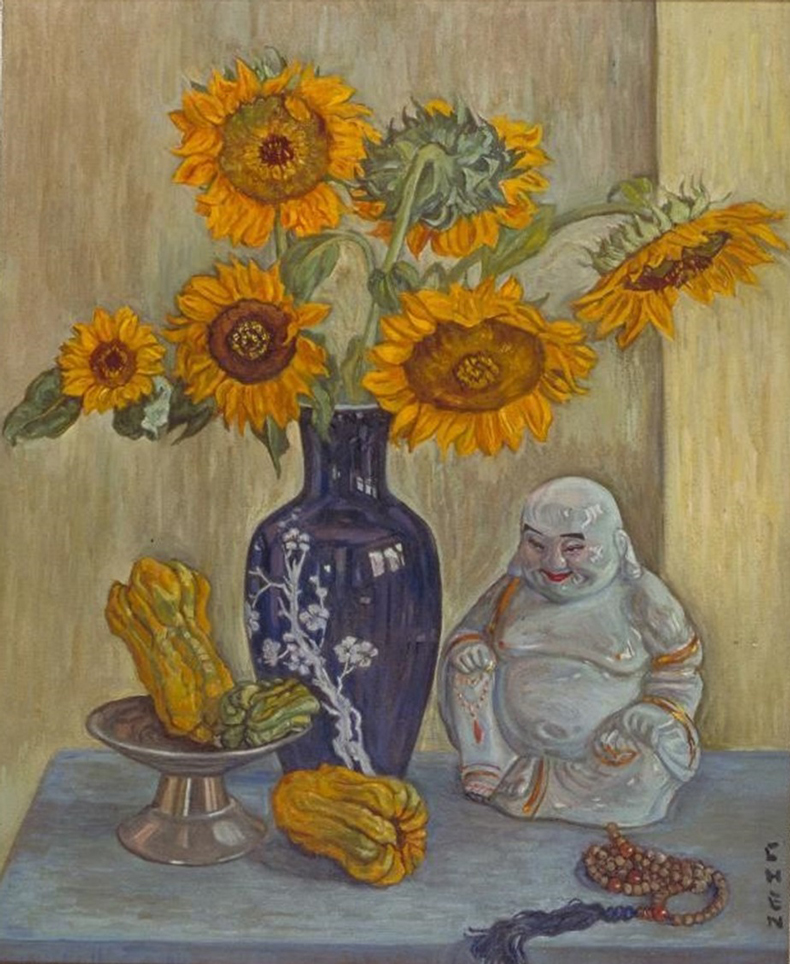
Sunflower and Buddha (1971), Georgette Chen
National Gallery Singapore
Brilliant yellow sunflowers mirror the golden tones of gourds against a deep blue vase, creating a visual counterpoint to the serene Buddha figure. An influential figure in the development of visual arts in Singapore, Chen unites disparate iconographic elements in her composition, presenting Buddhist prayer beads and gourds – a vegetable not native to Europe – to complicate the painting’s relationship to a genre that is commonly perceived as having European or Egyptian roots. Click here to discover more.

‘Four things to see’ is sponsored by Bloomberg Connects, a free arts and culture platform that provides access to museums, galleries and cultural spaces around the world on demand. Explore now.
